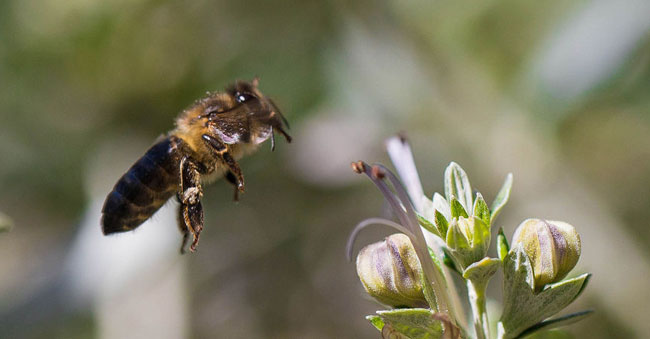Think About Pollinating Bees Before You Spray
By Chris Williams on August 14, 2013.

In June at a shopping center near Portland, Oregon, 55 linden trees that were in full bloom were sprayed with Safari insecticide (dinotefuran) to kill aphids. As a result, it’s estimated that 25,000-50,000 pollinating carpenter bees and bumble bees were killed by the pesticide. The product label prohibits applying the product or allowing it to drift to “blooming crops or weeds if bees are visiting the treatment area.” Obviously the landscaping crew didn’t pay attention to the label or never noticed thousands of bees working the blooms.
A Memorial Service for Dead Bees
But it was hard not to notice piles of dead bees in the Target store parking lot. Citizens were outraged; the state temporarily banned the pesticide, and the incident made national and even international news. A memorial service was scheduled for the bees, while beekeepers and environmental groups threatened to sue EPA for failing to protect pollinators from pesticide use.
This kind of misapplication happens all the time, especially when pesticides are applied by homeowners or untrained applicators. But this single incident had a huge impact at the Environmental Protection Agency. EPA has always touted pollinator protection but as a result of the Oregon publicity, pesticide use in suburban/urban areas and its impact on our already endangered pollinators suddenly took a top priority at EPA. The National Pest Management Association (the member trade association of pest control companies) is also calling for EPA to revise the bee hazard statement on pesticide labels to make it more stringent while still allowing the professional control of stinging insects that threaten public health.
The main concern is the use of neonicotinoid pesticides like Safari. Neonicotinoids have already been implicated as part of the reason for the honey bee Colony Collapse Disorder which has decimated the bee population in some areas. However, other homeowner-use pesticides will also kill bees. We get so used to the presence of bees on blooming plants that we fail to even notice them. We notice insect feeding damage to our plants though and we reach for the bug spray, without thinking about how that spray might impact pollinating bees. If you’re applying an insecticide to kill plant-feeding insects, bees are insects too and will almost certainly be affected.
Check for Bee Activity
Many of us don’t recognize when certain plants are flowering. Some have flowers that are inconspicuous to us but are very visible to bees. New pesticide label language will probably contain a statement like, “Flowers include the blooming, pollen-shedding or nectar-producing parts of plants.”
The best advice is, before you spray, spend several minutes studying that plant. Is it in bloom? Do you see honey bees or other bees visiting the plant? Honey bees are the best known pollinators, but there are many other solitary bees and the larger bumble bees or carpenter bees that also visit flowers. If bees are buzzing about, put the spray away—at least until later.
Using These Tips to Treat Plants Will Help Protect Bees
- Look for a bee precautionary statement on the label and follow it
- Treat at dusk or very early in the morning whenever possible
- Avoid applying insecticides when plants are in bloom
- Avoid using insecticide dusts or powders
- Use an insecticide with a short residual (life span) of only a few hours, not one that remains effective for days
- Don’t apply insecticide at a rate higher than the label allows
- Don’t treat if winds are greater than 10 mph (so pesticide doesn’t drift onto nearby flowering plants)